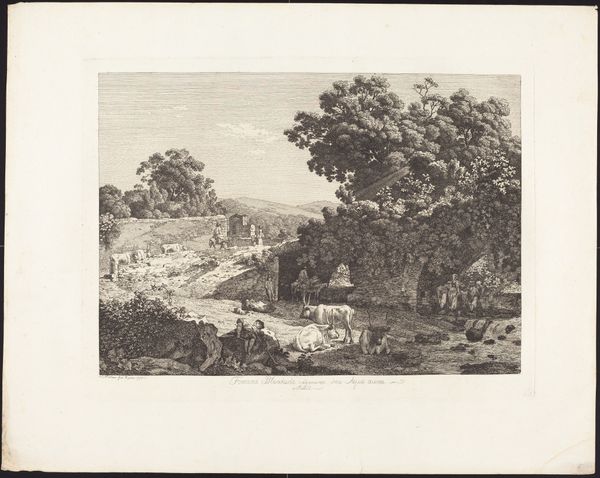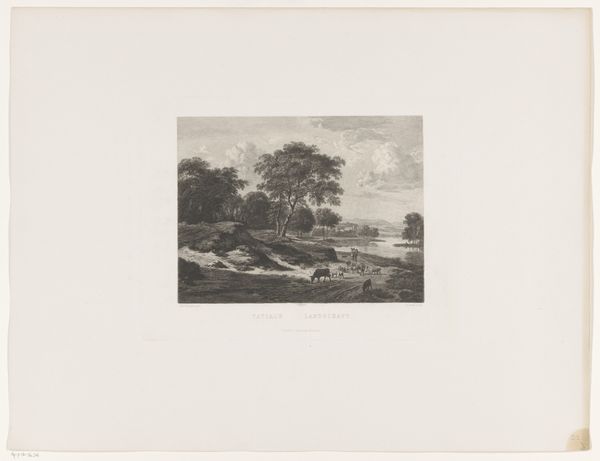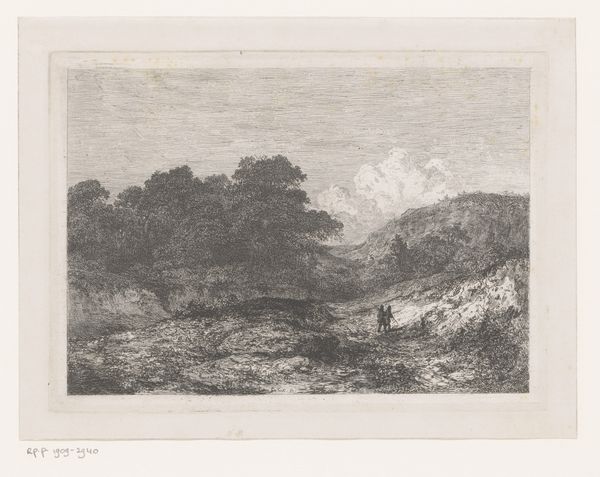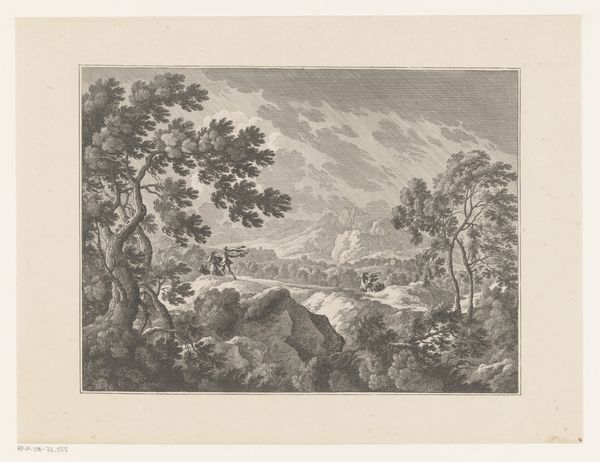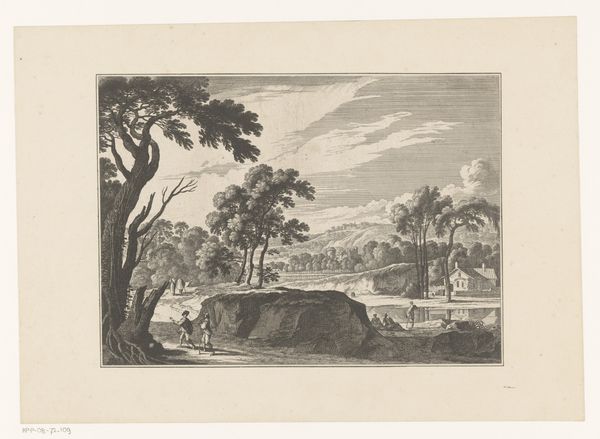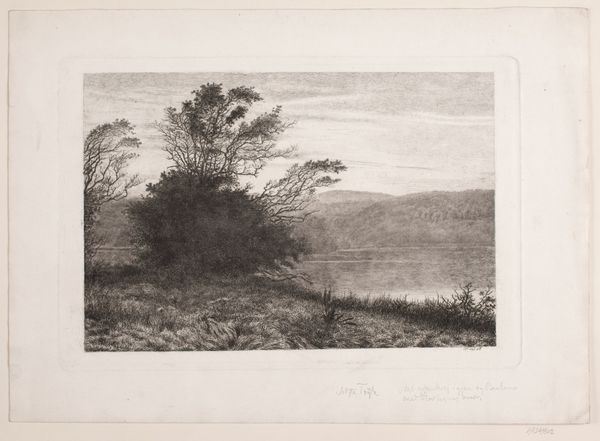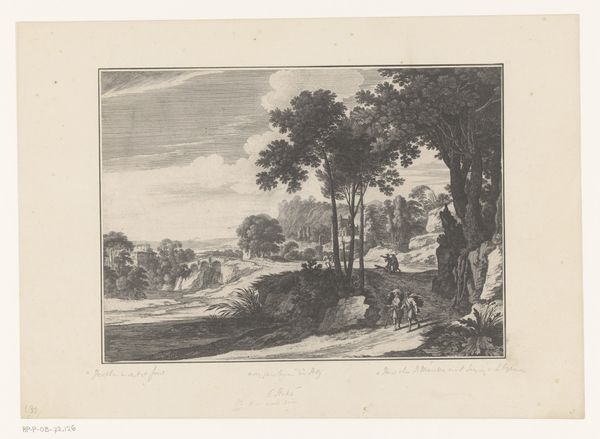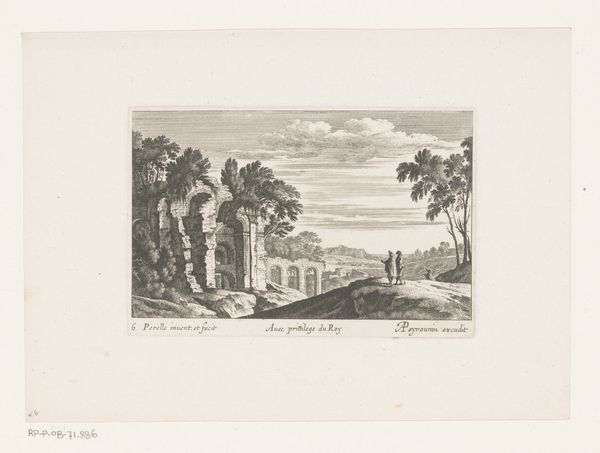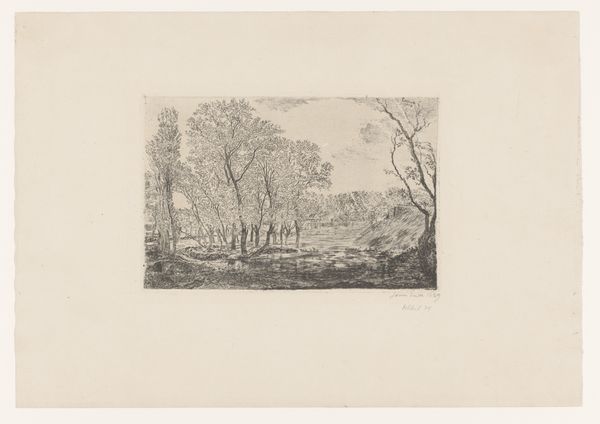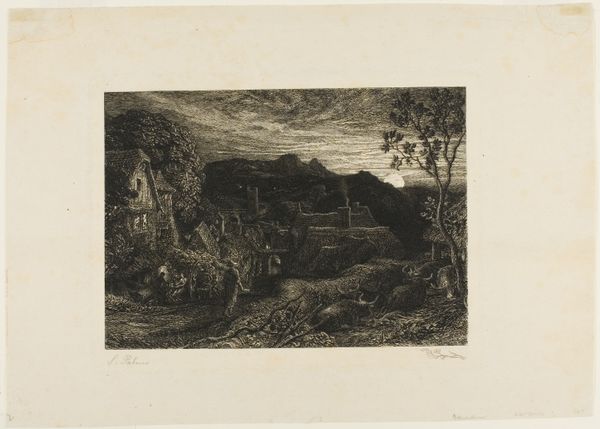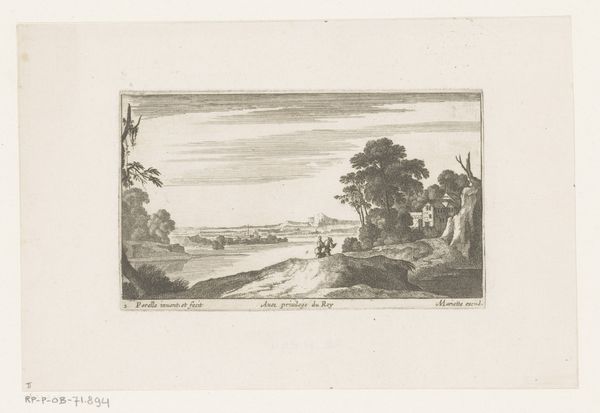
Dimensions: height 159 mm, width 208 mm
Copyright: Rijks Museum: Open Domain
Editor: We're looking at "Landschap met reizigers," or "Landscape with Travelers," an etching by Léon Gaucherel, made sometime between 1860 and 1886. There's a real sense of depth created by the use of dark and light here. What strikes you most about its formal elements? Curator: The etching technique employed here allows for a remarkable tonal range. Notice the foreground, dense with varied textures achieved through cross-hatching and fine line work. How does the artist then guide our eye through the planes of space? Editor: The light seems to lead the eye into the distance. The crisp, sharp lines fade away to soft textures as they meet the horizon, and then, a wide, cloud-filled sky. How does the sky tie it all together, formally? Curator: Indeed. The expansive sky, rendered with delicate, almost imperceptible lines, contrasts with the densely worked earth. Semiotically, consider this opposition. The grounded and earthy is brought face-to-face with a potentially boundless heaven. What philosophy might apply? Editor: Maybe Kant's sublime. It reminds me of the human desire to comprehend that which is impossible to grasp. This vista makes me aware of my limitations. Curator: Precisely. Further consider the strategically placed travelers. How do they function within the visual structure? Editor: They are tiny compared to the trees and hills and land. Their presence highlights our smallness within a vast and timeless nature, enhancing the overall sensation of Romantic sublime. Curator: Exactly. Gaucherel masterfully uses the formal properties of etching to create a landscape imbued with Romantic sensibility. An awareness of tone, line, and compositional arrangement gives the piece great dynamism. Editor: This exercise really focused my looking. I'll never be able to casually glance at a landscape again!
Comments
No comments
Be the first to comment and join the conversation on the ultimate creative platform.
